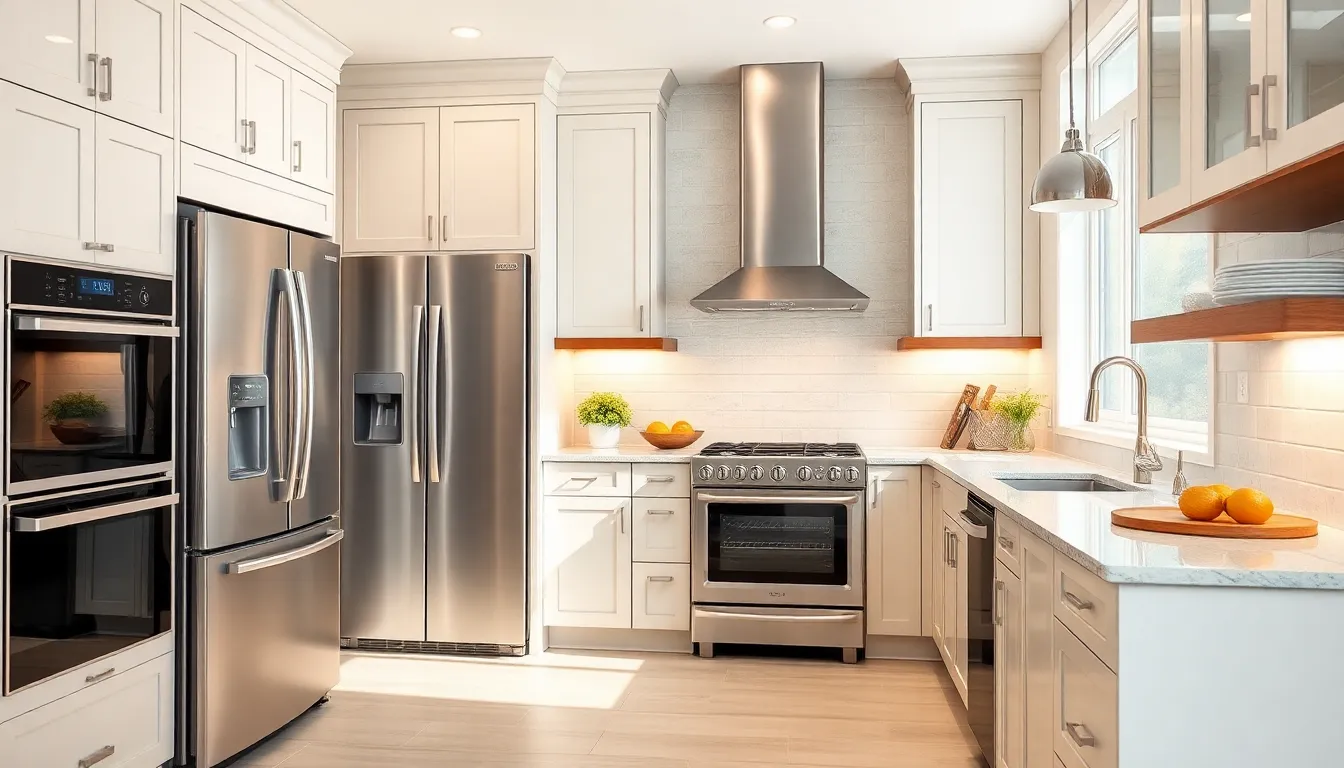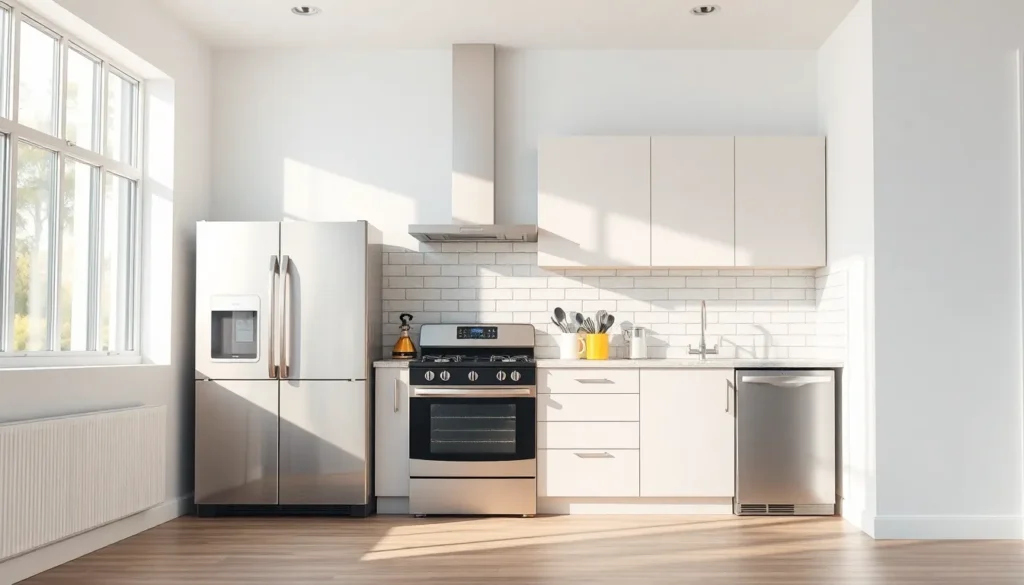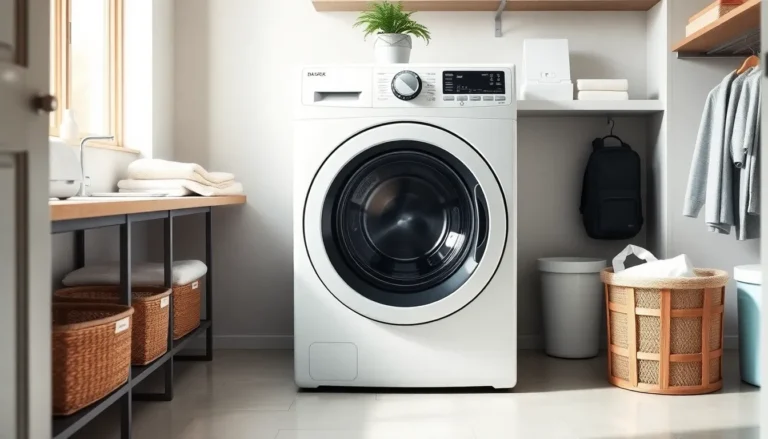Navigating the world of home appliances can feel like trying to solve a Rubik’s Cube blindfolded. With the endless options out there, it’s easy to get lost in a sea of brands, features, and tech jargon that sounds more like a foreign language. But fear not! The ultimate appliance guides are here to save the day, turning you from a confused consumer into a savvy shopper.
Table of Contents
ToggleOverview of Ultimate Appliance Guides
Ultimate appliance guides serve as invaluable resources for consumers facing the complexities of modern home appliances. These guides break down intricate features, making it easier to understand various brands and technical terminology. Comprehensive comparisons highlight performance metrics, energy efficiency ratings, and user reviews, enabling a clear decision-making process.
Detailed sections categorize appliances into specific types, such as refrigerators, washers, or ovens. Each category features essential information tailored to different user needs. Visual aids, including charts and images, enhance understanding, helping consumers visualize their choices.
In-depth product reviews provide insights into both pros and cons, helping consumers make informed decisions. Expert advice on installation, maintenance, and troubleshooting adds practical value. Guides often include tips for maximizing appliance lifespan and efficiency, empowering consumers to get the most out of their investments.
Consumer-friendly language clarifies terms like BTU, wattage, and energy star ratings. This clarity fosters confidence and reduces hesitation during the purchasing process. Featured brands share transparency regarding warranties and customer service, allowing users to consider support options.
The aim of ultimate appliance guides is to simplify the shopping experience. By offering structured information, they reduce the feeling of being overwhelmed and guide consumers toward suitable selections. Readers can expect to find updated content reflecting current trends and technological advancements, ensuring relevance in a fast-evolving market.
Navigating the variety of options available becomes more manageable, ultimately leading to smarter purchasing decisions.
Types of Appliances Covered

These guides cover various types of appliances, ensuring consumers find the right fit for their needs.
Kitchen Appliances
Kitchen appliances include essential items like refrigerators, ovens, and dishwashers. Refrigerators come in styles such as French door, side-by-side, and top freezer, each offering distinct benefits. Ovens vary from convection to wall-mounted options, impacting cooking times and efficiency. Dishwashers are available in built-in or portable models, providing flexibility based on kitchen layout and space constraints. Evaluating performance metrics helps illustrate energy efficiency and functionality. User reviews highlight practical experiences, assisting shoppers in making well-informed choices.
Laundry Appliances
Laundry appliances focus on washers and dryers, which are crucial for managing clothing upkeep. Front-load and top-load washers appeal to different preferences and available spaces. Similarly, dryers present options like vented, ventless, and heat pump models, each with varying energy consumption levels. The guides compare capacity, cycle options, and noise levels to enhance decision-making. Detailed insights into installation requirements and maintenance tips ensure smooth operation long-term. Consumer reviews supply real-world insights, supporting informed selections.
Home Comfort Appliances
Home comfort appliances aim to enhance indoor living conditions. Air conditioners and heaters are foundational for climate control, while dehumidifiers and air purifiers promote healthier environments. Portable or window-mounted air conditioners allow adaptability for varied room sizes. Central heating systems provide consistent warmth across larger homes. Evaluating energy efficiency ratings assists in understanding cost-effectiveness. Informed comparisons of features guide consumers toward optimal options based on their unique needs. Comprehensive reviews offer insights into reliability and performance, streamlining the selection process.
Features to Consider
Selecting the right appliance involves a careful assessment of several key features. Prioritizing these characteristics helps consumers make informed decisions that suit their needs.
Energy Efficiency
Energy efficiency plays a crucial role in appliance selection. Appliances boasting high energy ratings save consumers money on utility bills while reducing environmental impact. The U.S. Department of Energy provides an energy guide label detailing consumption levels, helping buyers compare options easily. Consumers should look for Energy Star certification, indicating compliance with strict efficiency standards. An appliance’s long-term cost effectiveness relies significantly on its energy efficiency ratings.
Smart Technology
Smart technology has transformed how consumers interact with appliances. Many modern appliances offer features like app connectivity, voice control, and real-time notifications that enhance convenience. Owners can monitor and control devices remotely, optimizing usage based on their schedules. The integration of smart technology often includes energy management tools, allowing users to track consumption patterns. Investing in smart appliances can streamline daily tasks and improve overall home management.
Size and Capacity
Size and capacity are fundamental when choosing an appliance that fits one’s lifestyle. Different kitchens require specific dimensions, so measuring available space ensures a proper fit. In addition, capacity must align with household needs; larger families might benefit from bigger washers or ovens. Consult product specifications before making a purchase to verify dimensions and usability. Choosing the right size and capacity minimizes frustration and promotes efficiency in daily operations.
How to Choose the Right Appliance
Choosing the right appliance involves careful consideration of personal needs and budget. Each step ensures that selections meet specific requirements.
Assessing Your Needs
Identifying household needs serves as the first step in the appliance selection process. Determine the number of people in the household to decide on sizes and capacities. Consider daily routines when selecting items like refrigerators or washers. Features may vary significantly by brand; prioritize aspects that enhance usability and convenience. Envision how frequently certain appliances will be used, as this impacts both choice and long-term satisfaction. Assess any additional functions or smart technology that might improve efficiency based on usual usage patterns.
Budget Considerations
Establishing a budget is essential to streamline appliance choices. Evaluate how much can be allocated to appliances without sacrificing quality. Researching different brands across price ranges helps identify competitive options. Prioritize Energy Star certified appliances, as they typically save on operating costs, offsetting initial expenses. Assess total cost of ownership, which includes purchase price, installation, and maintenance expenses. Evaluate financing options or ongoing sales that might make higher-end models more accessible. Balancing upfront costs with long-term savings ensures better decision-making.
Maintenance Tips for Appliances
Proper maintenance enhances the efficiency and lifespan of home appliances. Regular attention to details can prevent costly repairs and ensure optimal performance.
Regular Cleaning
Establishing a cleaning schedule is essential for maintaining appliances. Dust and debris can accumulate and affect performance. For instance, clean refrigerator coils every six months to improve energy efficiency. Wipe down oven surfaces regularly to prevent grease build-up. Run dishwashers empty with vinegar monthly to remove odors and residue. Regularly check and clean lint filters in dryers after each use to prevent fires and improve airflow. Avoid harsh chemicals that can damage surfaces. Utilizing mild cleaners can extend appliance life, ensuring they function effectively over time.
Troubleshooting Common Issues
Identifying and addressing common appliance issues quickly saves time and resources. Start by checking power sources if an appliance won’t turn on; this includes verifying plugs and circuit breakers. Inspect water connections for leaks in dishwashers and washing machines, as loose hoses could cause significant damage. Listen for unusual noises; these often indicate mechanical problems that require attention. When an appliance operates inefficiently, refer to user manuals for specific troubleshooting tips. Using resources like online forums can also provide valuable solutions shared by other users. Proactive measures can prevent minor issues from escalating, allowing appliances to work smoothly.
Navigating the world of home appliances doesn’t have to be daunting. With the right resources at their fingertips, consumers can make informed choices that suit their specific needs. These ultimate appliance guides empower shoppers by breaking down complex information into digestible insights.
By focusing on essential features like energy efficiency and smart technology, these guides help streamline the decision-making process. Regular maintenance tips and troubleshooting advice ensure appliances perform optimally over time.
As technology evolves, staying updated on the latest trends and innovations is crucial. Readers can confidently approach their appliance purchases, armed with the knowledge needed to select the best options for their homes.





